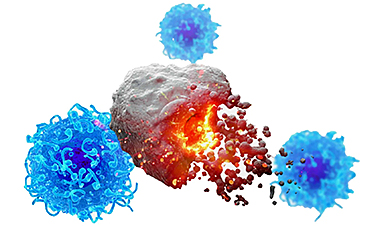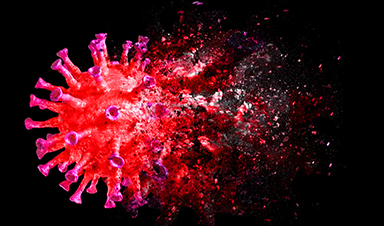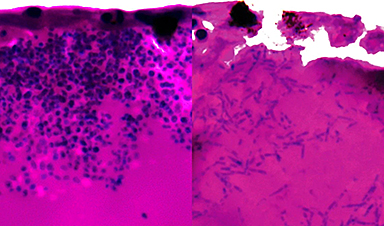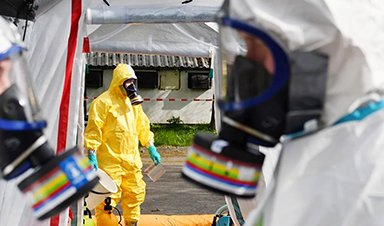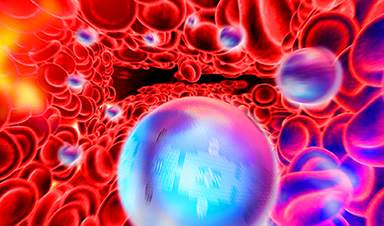The method triggers immune responses that inhibit melanoma, triple-negative breast cancer, lung carcinoma, and ovarian cancer.
Cancer treatment vaccines have been in development since 2010, when the first was approved for prostate cancer, followed by another in 2015 for melanoma. While many therapeutic (rather than preventive) cancer vaccines have been researched since then, none have received approval. A major challenge in their development is identifying tumor antigens that are distinct enough from normal cells to trigger a strong immune response.
Researchers at Tufts University have now created a cancer vaccine designed to enhance the immune system's ability to recognize tumor antigens. This approach generates a powerful immune response and establishes long-term immunological memory, reducing the likelihood of tumor recurrence. Unlike traditional cancer vaccines that target specific antigens, this new vaccine utilizes a lysate—a mix of protein fragments derived from any solid tumor—eliminating the need to identify a single tumor-specific antigen.
The vaccine they produced worked against multiple solid tumors in animal models, including melanoma, triple-negative breast cancer, Lewis lung carcinoma, and clinically inoperable ovarian cancer.
Developed by a team led by Qiaobing Xu, professor of biomedical engineering, the method builds on earlier work expressing specific antigens for an enhanced immune response by making lipid nanoparticles that carry mRNA into the lymphatic system.
"We have significantly improved the cancer vaccine design by making it applicable to any solid tumor from which we can create a lysate, possibly even tumors of unknown origin, without having to select mRNA sequences, and then adding another component – called AHPC – that helps channel the protein fragments from the cancer cells into the immunological response pathway," said Xu.
How the Vaccine Works
Unlike traditional vaccines designed to prevent infectious diseases caused by bacteria or viruses, cancer vaccines work by stimulating the body's immune system to recognize and attack cancer cells. And unlike most vaccines against pathogens, they are designed to be therapeutic rather than preventive—acting to eliminate an existing disease. Some preventive cancer vaccines do exist, but they are generally targeted to viruses that are linked to cancers, such as HPV linked to cervical cancer.
The key to the increased potency of the new cancer vaccine lies in its ability to direct tumor-derived antigens into a cellular pathway that efficiently presents the antigens to the immune system. Think of the presentation as a kind of police lineup, where each antigen is presented for the immune system to decide if it can be considered a "suspect."
Rounding up the antigens and getting them into an antigen presenting cell like a macrophage or dendritic cell (the police stations, if we continue with the analogy) is generally an inefficient process for tumor antigens. This is where the Tufts research team applied a two-stage method to power up the process.
A Two-Stage Approach to Enhancing Immune Response
First, to make sure they round up all tumor proteins-of-interest, they modified the mix of tumor proteins with the AHPC molecule, which in turn recruits an enzyme to put a tag on the protein called a ubiquitin. It allows the cell to identify and process the protein into fragments for presentation to the immune system.
The researchers then packaged the AHPC-modified tumor proteins into tiny lipid (fat molecule) bubbles, specifically designed to home in on lymph nodes, where most of antigen presenting cells can be found.
Tested in animal models of melanoma, triple-negative breast cancer, Lewis lung carcinoma, and inoperable ovarian cancer, the vaccine elicited a strong response by cytotoxic T cells, which attack the growing tumors, suppressing further growth and metastasis.
"Fighting cancer has always been an arsenal approach," said Xu. "Adding cancer vaccines to surgical excision, chemotherapy, and other drugs used to enhance cytotoxic T cell activity could lead to improved patient responses and longer-term prevention of cancer recurrence."
Reference: "Antitumour vaccination via the targeted proteolysis of antigens isolated from tumour lysates" by Yu Zhao, Donghui Song, Zeyu Wang, Qingqing Huang, Fan Huang, Zhongfeng Ye, Douglas Wich, Mengting Chen, Jennifer Khirallah, Shuliang Gao, Yang Liu and Qiaobing Xu, 28 November 2024, Nature Biomedical Engineering.
DOI: 10.1038/s41551-024-01285-5
The study was funded by the National Institutes of Health.
News
AI Helped Scientists Stop a Virus With One Tiny Change
Using AI, researchers identified one tiny molecular interaction that viruses need to infect cells. Disrupting it stopped the virus before infection could begin. Washington State University scientists have uncovered a method to interfere with a key [...]
Deadly Hospital Fungus May Finally Have a Weakness
A deadly, drug-resistant hospital fungus may finally have a weakness—and scientists think they’ve found it. Researchers have identified a genetic process that could open the door to new treatments for a dangerous fungal infection [...]
Fever-Proof Bird Flu Variant Could Fuel the Next Pandemic
Bird flu viruses present a significant risk to humans because they can continue replicating at temperatures higher than a typical fever. Fever is one of the body’s main tools for slowing or stopping viral [...]
What could the future of nanoscience look like?
Society has a lot to thank for nanoscience. From improved health monitoring to reducing the size of electronics, scientists’ ability to delve deeper and better understand chemistry at the nanoscale has opened up numerous [...]
Scientists Melt Cancer’s Hidden “Power Hubs” and Stop Tumor Growth
Researchers discovered that in a rare kidney cancer, RNA builds droplet-like hubs that act as growth control centers inside tumor cells. By engineering a molecular switch to dissolve these hubs, they were able to halt cancer [...]
Platelet-inspired nanoparticles could improve treatment of inflammatory diseases
Scientists have developed platelet-inspired nanoparticles that deliver anti-inflammatory drugs directly to brain-computer interface implants, doubling their effectiveness. Scientists have found a way to improve the performance of brain-computer interface (BCI) electrodes by delivering anti-inflammatory drugs directly [...]
After 150 years, a new chapter in cancer therapy is finally beginning
For decades, researchers have been looking for ways to destroy cancer cells in a targeted manner without further weakening the body. But for many patients whose immune system is severely impaired by chemotherapy or radiation, [...]
Older chemical libraries show promise for fighting resistant strains of COVID-19 virus
SARS‑CoV‑2, the virus that causes COVID-19, continues to mutate, with some newer strains becoming less responsive to current antiviral treatments like Paxlovid. Now, University of California San Diego scientists and an international team of [...]
Lower doses of immunotherapy for skin cancer give better results, study suggests
According to a new study, lower doses of approved immunotherapy for malignant melanoma can give better results against tumors, while reducing side effects. This is reported by researchers at Karolinska Institutet in the Journal of the National [...]
Researchers highlight five pathways through which microplastics can harm the brain
Microplastics could be fueling neurodegenerative diseases like Alzheimer's and Parkinson's, with a new study highlighting five ways microplastics can trigger inflammation and damage in the brain. More than 57 million people live with dementia, [...]
Tiny Metal Nanodots Obliterate Cancer Cells While Largely Sparing Healthy Tissue
Scientists have developed tiny metal-oxide particles that push cancer cells past their stress limits while sparing healthy tissue. An international team led by RMIT University has developed tiny particles called nanodots, crafted from a metallic compound, [...]
Gold Nanoclusters Could Supercharge Quantum Computers
Researchers found that gold “super atoms” can behave like the atoms in top-tier quantum systems—only far easier to scale. These tiny clusters can be customized at the molecular level, offering a powerful, tunable foundation [...]
A single shot of HPV vaccine may be enough to fight cervical cancer, study finds
WASHINGTON -- A single HPV vaccination appears just as effective as two doses at preventing the viral infection that causes cervical cancer, researchers reported Wednesday. HPV, or human papillomavirus, is very common and spread [...]
New technique overcomes technological barrier in 3D brain imaging
Scientists at the Swiss Light Source SLS have succeeded in mapping a piece of brain tissue in 3D at unprecedented resolution using X-rays, non-destructively. The breakthrough overcomes a long-standing technological barrier that had limited [...]
Scientists Uncover Hidden Blood Pattern in Long COVID
Researchers found persistent microclot and NET structures in Long COVID blood that may explain long-lasting symptoms. Researchers examining Long COVID have identified a structural connection between circulating microclots and neutrophil extracellular traps (NETs). The [...]
This Cellular Trick Helps Cancer Spread, but Could Also Stop It
Groups of normal cbiells can sense far into their surroundings, helping explain cancer cell migration. Understanding this ability could lead to new ways to limit tumor spread. The tale of the princess and the [...]
